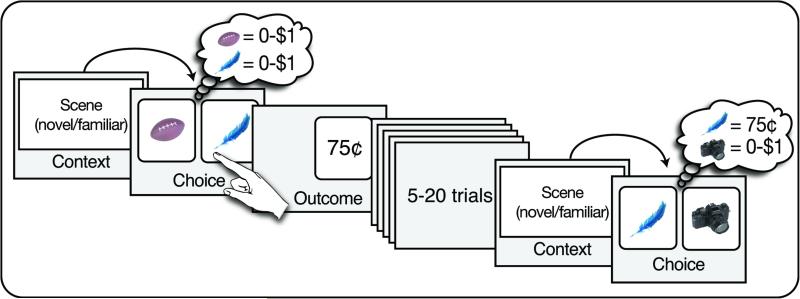Figure 1.
Schematic of experimental design. On each trial, a familiar or novel scene was first presented to establish retrieval or encoding ‘modes’, respectively. Then participants chose between two cards for the chance to win money. Each card had an object on one side and, if chosen, flipped over to reveal a value that ranged from 0-$1. On some trials, both cards had new objects; on other trials, one of the cards had a previously chosen object on it. Because cards with the same object always had the same value, if participants remembered the value of the old card on these critical trials, they could increase their earnings (for example, remembering that the feather was worth 75¢ and choosing it). We measured whether familiar vs. novel preceding scenes influenced the degree to which choices were guided by value memories. We hypothesized that value memories would be more likely to influence choices that were made after familiar, as compared to novel, scenes. This is because familiar scenes would put subjects in a ‘retrieval state’, making relevant memories more accessible at the time of choice.

